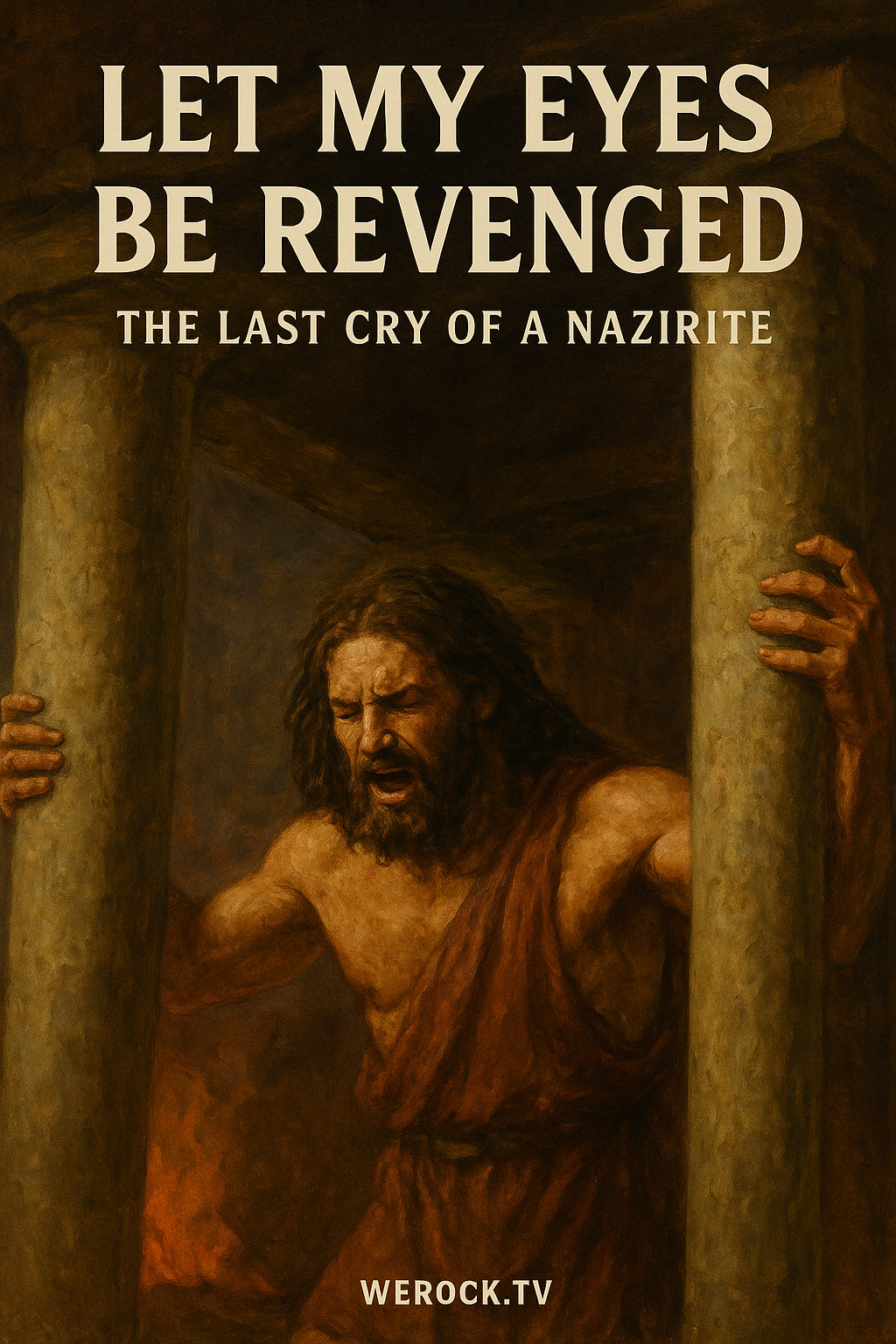
“Let my eyes be revenged” – Samson
There are only three Nazirites named in Scripture — Samuel, John the Baptist, and Samson. Each was set apart from birth, consecrated not by personal vow but by divine appointment. Yet among them, Samson stands as the most tragic: a man anointed with power, undone by passion, and remembered for a prayer that echoed through the ruins of a pagan temple — “Let my eyes be revenged.”
The Vow and the Fall
A Nazirite was one who vowed to be separated unto God — no razor upon the head, no wine upon the lips, no contact with death. It was a sign of devotion, of holiness lived in resistance to the world’s corruption.
But Samson’s life blurs the line between consecration and corruption. His strength came from his covenant, but his weakness came from his desire. The same eyes that once burned with divine calling were blinded by the seduction of Delilah and the gods of Philistia.
When his eyes were put out, it wasn’t just physical — it was prophetic. The man who once “did what was right in his own eyes” now had none left to see.
The Prayer of Vengeance
In Judges 16:28, the fallen judge utters his final prayer:
“O Lord GOD, please remember me and please strengthen me just this one time, O God, that I may be avenged of the Philistines for my two eyes.”
It is not a psalm of peace or forgiveness. It is a cry born of humiliation, a prayer for power — not to live, but to strike back. And yet, God answers. The Spirit returns one last time. Samson grasps the pillars, the twin supports of the Philistine temple, and pulls them down — crushing his enemies and himself beneath the weight of vengeance.
The Shadow and the Cross
Samson’s final act is both victory and tragedy. It reveals a truth we often miss: divine strength can still work through human frailty, but that strength can also destroy when it serves vengeance rather than mercy.
In this way, Samson foreshadows the greater deliverer to come — Christ, who also stretched out His arms between two pillars: not to destroy, but to redeem.
Where Samson’s death buried his enemies in rubble, Christ’s death buried enmity itself — breaking the cycle of revenge, ending the blindness of hate.
Seeing Again
Samson’s story warns of what happens when strength is spent on revenge instead of restoration. It reminds us that the eyes of the heart must be healed before the hands can be holy.
In a world still obsessed with vengeance, we are called to see differently — not through the blinded eyes of Samson, but through the pierced eyes of the Savior.
